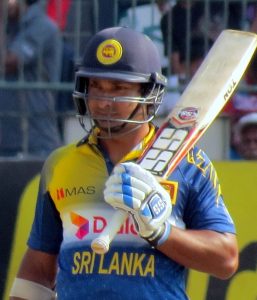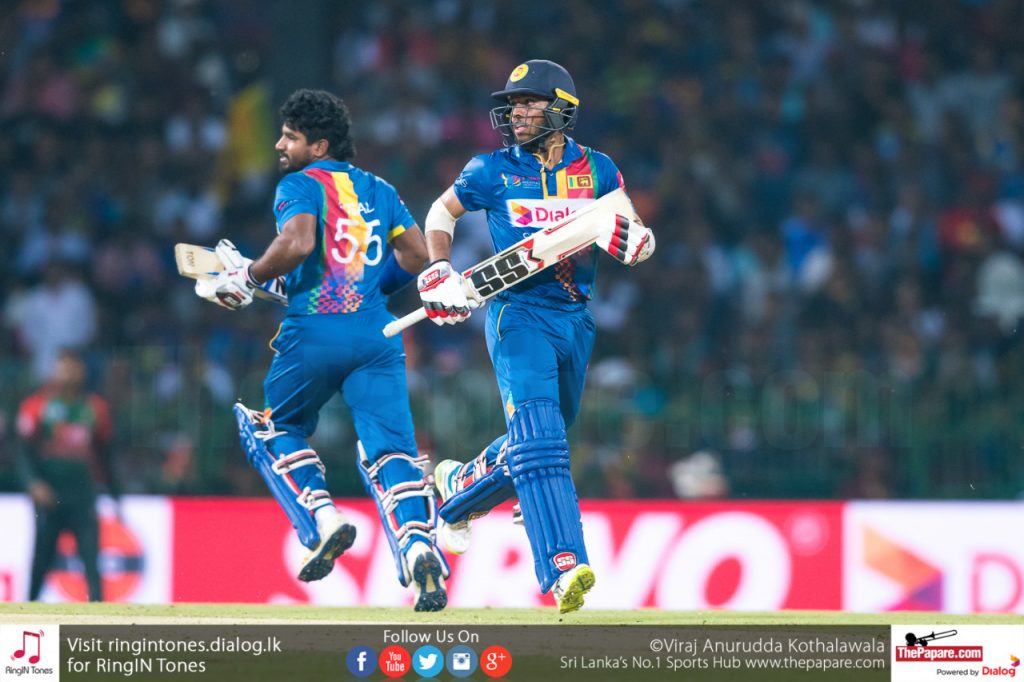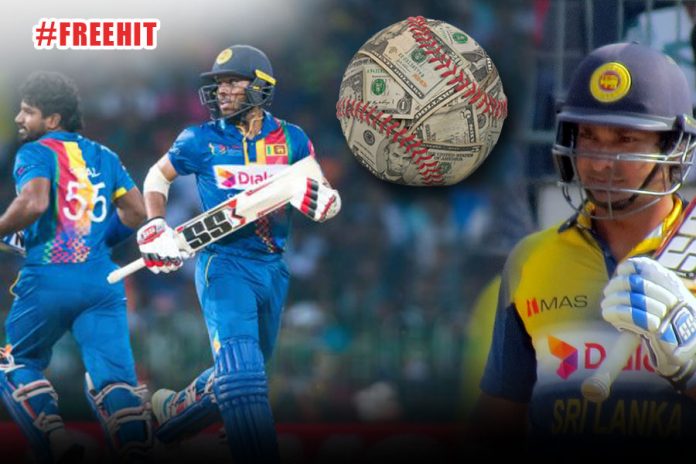Sri Lanka is the new England and England is the new Sri Lanka. England introduced Cricket to the world via the British colonies, but have always lagged behind the rest of the Cricketing nations. The time they laid claim to a period of dominance in any format or revolutionized any format through strategy or game play is non-existent. Well at least until the current ODI / T20 team.
On the other hand, Sri Lanka have gone from producing innovations such as pinch hitting in the early overs, mystery spinners and slingas to a very ‘bland’ style with the only emphasis being on showing up. Around 5-6 years ago the management and captains started throwing around the phrase ‘our brand of cricket’ with zero brand identity in reality.
Free hit contributor – Sandeep Rodrigo
England are now throwing in all but the kitchen sink at the opposition from the first ball with a fearless brand of Cricket. Despite being thrashed during the Ashes, they managed to win the ODI contest between the two sides comprehensively with a 4-1 score-line. So, what is their winning strategy?
Steven Smith claimed after the series that “England have played a different brand of cricket where they go really hard the whole time. That can be risky as well at times, particularly in big tournaments. You might get yourselves to the semi-finals or something but you can have those days where you get bowled out for 150”. I’m sorry Mr. Smith but that’s sour grapes talking. Any team can have a bad day, but the long-term success of this pedal to the metal strategy used by England has matched the strategy with the correct personnel, specific skill sets, the correct mental attributes, opposition (and conditions) analysis and having plan A, B and C. These strategies are the reason that England has still managed to put up a good fight after being 8 for 5 in the only game they lost in the series. I shudder to imagine the current Sri Lanka team at 8 for 5.
While you may have 11 well spoken, good looking gentleman in a team, you can only afford to have one wicket keeper. Especially in a T20 side. Apart from the obvious, that there’s only one set of wickets to keep, in a blink- and-you-miss environment where the cow corner is now 360 degrees, a team needs as many people as possible to roll their arms over.

- Dinesh Chandimal
- Upul Tharanga (Yes, I know this is probably not Sangakkara syndrome and is not an out and out wicket keeper, but he doesn’t bowl and has kept wicket so I’m including him anyway)
- Kusal Perera
- Kusal Mendis
- Niroshan Dickwella
- Sadeera Samarawickrama
- Sandun Weerakkody
Among the others waiting in the wing are two youngsters, Lahiru Milantha (23 years) and Minod Bhanuka (22 years).
You can certainly argue that Chandimal, Tharanga, the 2 Kusals, and Dickwella (with exception of Matthews) are probably the best batsmen in the Sri Lanka side currently. While for a Test team you can include all 5 and Kaushal Silva for good measure, including more than 3 in the T20 team takes away a possible 12 overs (60%) and seriously reduces the variety of combined skills within the team.
Which brings me to Moneyball.
Moneyball is a concept of Sabermetrics for baseball made famous by the movie of the same name based on the book Moneyball: The Art of Winning an Unfair Game authored by Michael Lewis. As T20 gets more and more baseball style wild heaves, the concept also becomes more and more appropriate.
The focus of this article is on the limited overs games and not tests. The formula for Tests is pretty simple. Get 20 wickets and make sure you score more than the opposition. Test cricket is an art to the science of limited overs cricket. It’s a battle of talent rather than the battle of skills required for the limited overs game. It is truly a test of attrition over 5 days rather than the burst of energy spent over 3 hours. If you ask me, talent is what you are born with, which you depend on over a 5 day period to surmount anything that comes at you. Skill on the other hand is what you work on, practice and develop to adapt to situations thrown at you in a constantly changing landscape of a T20 / 50 over game. It’s not to say that you don’t need both, it just what is more important for each format of the game.
Sabermetrics used in Baseball has already trickled down in to T20 cricket. Most teams now look at new metrics such as Active rate (number of scoring shots against balls faced), boundary percentage and over economies of a bowler from 1-20 overs in T20 vs. the average economy of each over from 1-20 (more on that later) rather than the conventional economy rates, strike rates, etc. The bottom line is matching certain data against the skills each player possesses and putting out a team and strategy based on the variables such as pitch (behavior), ground (size to boundary), opposition, etc.
This is where my above argument of talent vs. skills for T20 and the moneyball theories come in to play. Whilst your heart may tell you to stack the team based on the country’s top talent, the brain should be telling you to go with horses for courses as the old adage goes.
New coach Chandika Hathurusinghe is well documented to be a fan of the statistics and we’ve already seen the strategy in changing personnel for tours or matches based on variable factors and this is an absolutely good sign.
T20 is the ideal breeding ground to experiment on both Moneyball and youth integration. It’s about finding multi-dimensional skill specialists. The possibility of statistical analysis and mapping strategies accordingly is still at the infant stage and has a larger scope in the coming years. However, with T20’s evolving so fast and exponentially, the statistical analysis must also have a back date. There is no point going as far back as 2006 or even 2012. The game has changed so much. As mentioned earlier, teams are looking at economies of each over (broken down in to 20) against economies of bowlers in your squad for those overs. This is where you calculate per over average of each over of a T20. You can decide on how far back you want to go on the data, and depending on your upcoming fixture you can decide to filter on preset criteria (matches in sub-continent, matches in fast wickets, 1st or 2nd innings, etc). Then you take the economies for each over of the bowlers in your squad. Finally, you see the variance. For example, the average runs scored in the 15th over of a game in Sri Lanka in the 2nd innings could be 9.05. Then you see what your bowler’s economy is in the 15th over of a game in Sri Lanka in the 2nd innings. Bowler ‘A’ could have an economy of 10.75 in that over (1.70 higher than total average) and Bowler ‘B’ could have an economy of 8.20 (0.85 less than total average). This allows for an informed decision when throwing the ball at a team member to bowl the 15th over of a 2nd innings in a T20 in SL.
This is not all, Moneyball teaches to analyze and more importantly break down each facet and each discipline to derive quantifiable data that can be mapped to qualifiable skill. To look at how many full balls have been scored off in the last 2 overs, which length got most dot balls in the first 5 overs, and then to match the bowler with the skills to deliver the required length at the required time.

It can be taken further in understanding the effects of each ground or unique conditions. Measuring the average distance of a six of your big hitters against the size of a particular ground can help make informed decisions on whether your big hitters can clear the boundary or in the case where the boundary is bigger whether you want to pick a fast runner between wickets who has a high singles and doubles rate.
Yes, this is not an exact science. As the famous saying goes, “stats are like a mini skirt, they show a lot but hide the good bits”. But every industry, business and sport globally is now moving towards ‘big data’. This is a mechanism that allows for better team selection, strategy preparation, informed decision making, match situation forecast and even subsequent targeted individual training. It is one component of a potentially successful formula.
I’m also a big fan of ‘heart’ and ‘guts’ which should never be discounted. That’s what makes a good player great. Let’s not forget the ‘Melbourne miracle’, ‘the Asela assault’, ‘the coming of age 4 in 4 for Mali’ and many more. These are not quantifiable nor qualifiable. These moments of magic will make you fall in love with the game and forever make this game wonderful.
To wrap it up, let’s not go with 5 wicket keepers even though they are the best batsmen we have, let’s not select a bowler against NZ just because he took X number of wickets in the last series against Pakistan. This is Moneyball. This is the analysis that allows for the emerging teams in the shorter format like England and India to play brave cricket. It’s not just blind aggression, it’s precise and calculated attack with a lot of homework done before hand.
It might too late for Sri Lanka to be the ground breakers of the new wave of Cricket, but if we don’t at least try, we will become the whipping boys of international T20 cricket for a generation to come. It might be strike two, but let’s have a Sri Lanka brand of Cricket where we go down swinging. Sri Lanka has always punched above our weight against the big boys with less money, less resources and less technology. We’ve always had the talent and the underdog mentality to play hard. Let’s start playing SMART too.
Sandeep Rodrigo – Follow me on Instagram (arm_chair_critic) and send me your best Sri Lanka T20 XI. (if you read above, that’s a trick question)
*Disclaimer: The views and opinions expressed in this article are those of the author’s and do not necessarily reflect the official policy or position of ThePapare.com
























